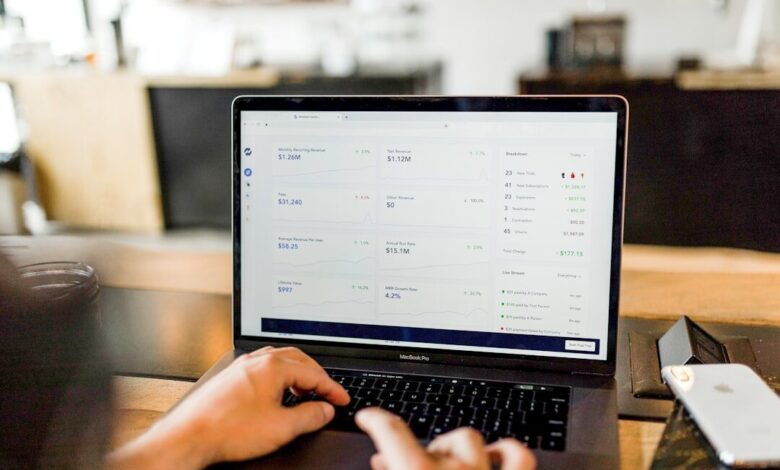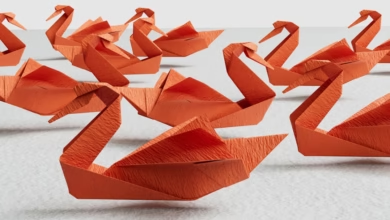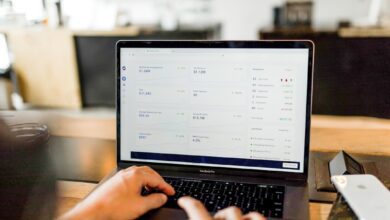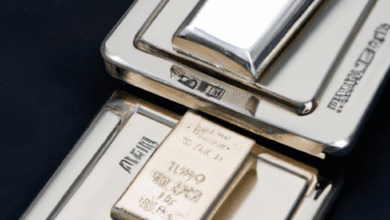Metals in Motion: Exploring Industrial Demand, Investment Strategies, and Economic Indicators

In today's rapidly evolving economic landscape, the significance of metals extends far beyond traditional uses, intertwining with industrial innovation and investment strategies. As global markets grapple with shifts in demand and supply, metals such as silver, copper, platinum, and palladium have emerged as both barometers of economic health and vital components in the transition to sustainable technologies. This article delves into the multifaceted roles of these metals, exploring how silver serves as a dual asset in both industrial applications and investment portfolios, while copper prices offer insights into global economic trends. We also examine the burgeoning demand for rare earth metals driven by green energy technologies, compare the investment potential of platinum and palladium, and discuss how inflation and regulatory frameworks influence metal prices. By understanding these dynamics, investors and industry stakeholders can better navigate the complexities of the metal markets and position themselves for future opportunities in a sustainable economy.
- 1. **Navigating the Metal Markets: Silver's Dual Role in Industry and Investment**
- 2. **Economic Indicators: How Copper Prices Mirror Global Health Trends**
1. **Navigating the Metal Markets: Silver's Dual Role in Industry and Investment**
Silver occupies a unique position in the global markets, functioning simultaneously as both an industrial commodity and a precious metal for investment. This dual role significantly influences its price dynamics and market behavior.
In the industrial sector, silver is prized for its exceptional conductivity, thermal properties, and resistance to corrosion. It is extensively used in electronics, solar panels, medical devices, and various industrial applications. The growth of green technologies, particularly solar energy, has led to increased demand for silver, as photovoltaic cells rely heavily on the metal. As industries evolve and strive for sustainability, the demand for silver in innovative applications is likely to rise, impacting its market value.
On the investment side, silver is often viewed as a safe-haven asset, similar to gold. Investors turn to silver during periods of economic uncertainty or inflation, seeking to preserve wealth. Its relatively lower price compared to gold makes it an accessible option for a broader range of investors. Furthermore, silver's liquidity and historical significance as a store of value enhance its appeal in investment portfolios.
The interplay between silver's industrial demand and investment appeal creates a complex market scenario. During economic expansions, industrial demand can drive prices higher, while in downturns, investment demand may increase as investors seek refuge from volatility. This duality can lead to price fluctuations influenced by macroeconomic trends, such as changes in manufacturing output or shifts in investor sentiment.
Ultimately, understanding silver's dual role is crucial for market participants. Investors must consider both the industrial applications driving demand and the broader economic factors that influence silver's status as a safe-haven asset. As the world continues to embrace technological advancements and navigate economic challenges, silver's significance in both markets will likely evolve, presenting both opportunities and risks for those engaged in its trade.
Silver has a unique position in both industrial and investment markets, serving as a crucial component in a range of applications while also being a popular choice for investors seeking a hedge against inflation and economic instability. In industrial contexts, silver is utilized in electronics, photovoltaics, and medical devices due to its excellent conductivity and antimicrobial properties. The growing demand for solar panels, driven by the global push for renewable energy, has significantly increased silver consumption in recent years, highlighting its importance in green technologies.
Conversely, in the investment arena, silver is often viewed as a safe-haven asset, similar to gold. Investors flock to silver during times of market volatility or economic downturns, which tends to drive up its price. Additionally, silver is more accessible than gold, making it an attractive option for a broader range of investors. The dual role of silver as both an industrial commodity and an investment vehicle creates a dynamic market influenced by various factors, including technological advancements, economic conditions, and shifts in investor sentiment.
Copper prices serve as a barometer for global economic health, reflecting trends in construction, manufacturing, and overall industrial activity. As copper is widely used in electrical wiring and plumbing, fluctuations in its price often indicate changes in demand for new infrastructure and economic expansion. A rising copper price typically signals robust economic growth, while a decline may suggest a slowdown. This correlation makes copper an essential indicator for economists and investors alike.
The demand for rare earth metals is increasingly driven by the rise of green energy technologies, including electric vehicles and wind turbines, which require these metals for batteries and magnets. As countries strive to reduce carbon emissions and transition to sustainable energy sources, the need for rare earth elements is set to grow. However, the supply chain for these metals is often challenged by geopolitical factors and environmental concerns, which can lead to price volatility and potential shortages.
When comparing platinum and palladium as investment options, several factors come into play. Historically, both metals have been used in catalytic converters for vehicles, but recent shifts in the automotive industry have favored palladium due to stricter emissions regulations. As a result, palladium prices have surged, often outpacing those of platinum. Investors must consider market trends, industrial demand, and long-term supply forecasts when determining which metal may offer better returns.
In terms of diversification, metals can play a pivotal role in investment portfolios by providing a hedge against economic uncertainty and inflation. Including a mix of precious and industrial metals can enhance portfolio stability, as their prices often behave differently in response to market conditions. This diversification can be particularly beneficial during periods of economic turbulence.
Inflation impacts the prices of both precious and industrial metals, as rising costs of living typically lead to increased demand for hard assets. Precious metals like gold and silver often see price increases during inflationary periods as investors seek to preserve wealth. Industrial metals, on the other hand, may experience price hikes due to increased production costs and supply chain disruptions, impacting overall market dynamics.
Aluminum’s future in a sustainable economy looks promising, driven by its lightweight properties and recyclability. As industries seek to reduce carbon footprints, aluminum's role in lightweighting vehicles and packaging is becoming increasingly important. Moreover, the push for sustainable mining practices and recycling initiatives is likely to enhance aluminum's market appeal, establishing it as a key player in the transition to a greener economy.
Finally, mining regulations significantly impact metal prices by affecting supply levels and operational costs. Stricter environmental regulations can lead to increased compliance costs for mining companies, which may be passed on to consumers through higher metal prices. Conversely, favorable regulations can encourage exploration and production, potentially stabilizing or lowering prices in the market. Understanding these dynamics is crucial for investors and industry stakeholders alike as they navigate the complexities of the metal markets.
2. **Economic Indicators: How Copper Prices Mirror Global Health Trends**
Copper prices serve as a key barometer for global economic health due to the metal's widespread use in various industries, including construction, electronics, and transportation. Often referred to as "Dr. Copper," this red metal is sensitive to changes in economic activity, as its demand typically rises during periods of growth and declines during downturns.
When economies expand, infrastructure projects and manufacturing activities increase, leading to higher consumption of copper. For instance, robust construction activity in emerging markets, particularly in China, has historically driven up copper prices. Conversely, during economic slowdowns or recessions, demand for copper tends to diminish, resulting in declining prices.
Additionally, copper prices are influenced by a range of economic indicators, such as manufacturing indices, GDP growth rates, and employment figures. For example, an increase in the Purchasing Managers' Index (PMI) often correlates with rising copper prices, as it signals increased manufacturing activity and demand for raw materials. Similarly, shifts in global trade dynamics, such as tariffs or trade agreements, can impact copper supply chains and, consequently, pricing.
Moreover, the growing emphasis on sustainable technologies, including electric vehicles and renewable energy systems, is expected to further bolster copper demand. As these sectors expand, they will require significant amounts of copper for wiring, batteries, and other components, potentially leading to long-term price increases.
In summary, copper prices not only reflect the immediate health of the global economy but also anticipate future trends driven by technological advancements and environmental considerations. Investors and analysts closely monitor copper market movements as they can provide valuable insights into broader economic conditions and potential shifts in market sentiment.
In conclusion, the dynamics of metal markets reveal a complex interplay between industrial applications and investment opportunities. Silver's dual role highlights its significance not only as a valuable asset for investors but also as a critical component in various industries, including electronics and renewable energy. Similarly, copper prices serve as a barometer for global economic health, showcasing the direct relationship between metals and macroeconomic trends.
As we explore the growing demand for rare earth metals driven by green energy technologies, it becomes clear that the transition to sustainable practices will shape future investment landscapes. The debate between platinum and palladium as investment options underscores the importance of market trends and personal strategies in metal investments, while the broader role of metals in portfolio diversification remains essential for risk management.
Moreover, the influence of inflation on the prices of both precious and industrial metals reinforces the necessity for investors to stay informed about economic conditions. Looking ahead, aluminum's potential in a sustainable economy points to the evolving nature of metal consumption and its environmental implications. Finally, the impact of mining regulations further complicates the landscape, affecting supply chains and pricing structures.
Overall, understanding these factors is crucial for investors and industry stakeholders alike, as they navigate the ever-changing terrain of metal markets. Embracing a comprehensive view of these elements will not only enhance investment strategies but also contribute to informed decision-making in a world increasingly reliant on these vital resources.





